Research Article
Volume 2 Issue 5 - 2018
Control Cases of Cacao Frosty Pod Rot (Moniliophthora Roreri) in Colombia: Outcomes
Agronomist Engineer Carrera 86 #34-56, Medellín, Colombia
*Corresponding Author: Gabriel Cubillos, Agronomist Engineer Carrera 86 #34-56, Medellín, Colombia.
Received: January 01, 2018; Published: March 06, 2018
Abstract
Frosty Pod Rot is an endemic disease with a limiting impact on cacao production in Colombia and Latin American countries. Bearing that in mind, 1400 hybrid cocoa trees (18 years of age) were monitored over the period of six months under traditional disease management measures and additional six months under a Cultural Control which included weekly removal of diseased fruits hanging from trees and their random disposal on the ground. During the Cultural Control period, production increased 120% and the incidence of the disease went from over 60% to below 10%. Crop rounds and health status of cocoa trees subject to Cultural Control are illustrated.
Keywords: Cacao; Frosty Pod Rot; Disease; Cultural control; Production
Introduction
Cacao Frosty Pod Rot (Moniliophtora roreri (Cif. & Par.) Evans., et al. (1981), also called in Spanish spot, frozen rot, snow, awe, rotten rot, malaria, pringue [Figure 1], is one of the most limiting diseases of cacao production, not only in Colombia, but also other parts of South and Central America [Figure 2]. It reaches incidence levels that fluctuate between 4-45% (Maya., et al. 2004) and, even more, as it has been recorded in some areas of the department of Antioquia.
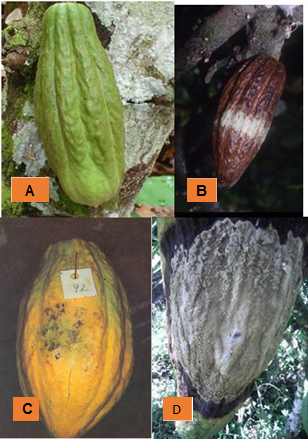
Figure 1: Different signs and symptoms of Frosty Pod Rot. A, in fruit less than two and a half months of age. B, in fruit of two and a half to four months. C, in fruit older than four months. D, sporulated fruit.
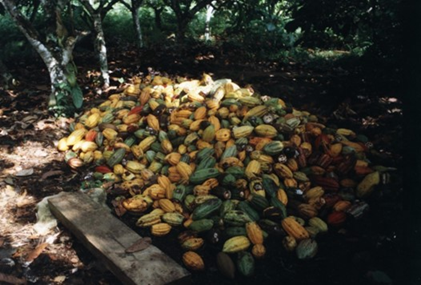
Figure 2: Damages caused by Frosty Pod Rot in cocoa crops. Farm San José, municipality of San Vicente de Chucurí (department of Santander), March, 2005.
From the epidemiological studies carried out by Dr. Michael Green, British adviser to the LUKER farm, from 1975 to 1977 the first evidences of Frosty Pod Rot control in Colombia were configured (Merchán, 1981). Later, based on Green's studies, Cubillos and Aranzazu (1979) implemented the control methodology in the region of Urabá (department of Antioquia). Studies by Cubillos (1981) and González (1983) on the treatment that should be given to diseased fruits, provided additional measures for the control of the disease; facilitating its management and reducing cost at the same time.
Rodríguez (2006) and Sáenz (2007), based on the results of Frosty Pod Rot Control Campaigns funded by the National Cacao Council and coordinated by the Colombian Agricultural Institute and the National Cacao Federation from 2005 to 2007, found significant loss reduction in the crop production of some cacao plantations of municipalities of San Vicente de Chucurí and Carmen de Chucuri (department of Santander) and of municipality of Chaparral (department of Tolima) subjected to cultural control of the diesease.
Materials and Methods
At San José farm, located in the village of Santa Rosa (municipality of San Vicente de Chucurí, Santander), 1400 eighteen-year-old hybrid cacao trees were monitored in 2005 (Ardila, 2005, unpublished data). During the first six months (January-June) the production of commercial grain was registered while applying traditional disease management measures (Pre-treatment) which included elimination of diseased fruits in the course of ripe fruit harvests. The following six months (July-December) the removal of diseased fruits hanging from trees and its random disposal on the ground was carried out every seven days, additional to moderate pruning of cacao trees. This was called Cultural Control (Treatment). The commercial production data was also registered under these conditions. In other four farms located in department of Antioquia Frosty Pod Rot control was carried out, but no information was recorded.
Results and Discussion
Table 1 lists commercial grain production data in kilograms corresponding to pre-treatment (Traditional Control) and treatment (Cultural Control) periods.
Results indicate a production of 325 kilograms per hectare, with levels of incidence of Frosty Pod Rot above 60% under Traditional Control treatment while in Cultural Control treatment production reached 725 kilograms per hectare, with an estimated incidence below 1%. A difference of 400 kilograms per hectare is established in favor of Cultural Control, equivalent to 10% production under Traditional Control measures. Cultural Control cost equals 120 kilograms per hectare, leaving a net profit of 280 kilograms per hectare.
| Year 2005 Traditional Control of Frosty Pod Rot (Pretreatment) |
|
| January | 155 |
| February | 90 |
| March | 185 |
| April | 180 |
| May | 48 |
| June | 0 |
| Total | 658 |
| Kilograms per Hectare | 325 |
| Year 2005 Cultural Control of Frosty Pod Rot (Treatment) |
|
| July | 21 |
| August | 12 |
| September | 60 |
| October | 125 |
| November | 317 |
| December | 915 |
| Total | 1450 |
| Kilograms per Hectare | 725 |
¹1 Hectare = 700 trees
Table 1: Commercial grain production in kilograms of 1400 cacao trees during 2005 under Traditional and Cultural Control of Frosty Pod Rot. Farm San José, municipality of San Vicente de Chucurí (department of Santander).
Table 1: Commercial grain production in kilograms of 1400 cacao trees during 2005 under Traditional and Cultural Control of Frosty Pod Rot. Farm San José, municipality of San Vicente de Chucurí (department of Santander).
Figure 3 shows sanitary status of a harvest round at San José farm in December 2005 when finished the records.
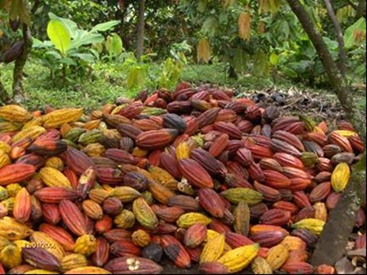
Figure 3: Round off harvest San José farm, Santa Rosa village, San Vicente de Chucurí (department of Santander). December, 2005.
Figures 4, 5 and 7 show good sanitary conditions of harvest rounds achieved in other municipalities mentioned above, after cacao crops underwent strict control of Frosty Pod Rot. Figure 6 displays healthy pods hanging from trees.
Although there are no records from farms in another municipalities, the levels of infection were kept below 1% during harvest seasons under Cultural Control measures, in different periods when pictures for this paper were taken. This indicates in some regions of Colombia, with simple practices, cacao producers have taken control of the management of Frosty Pod Rot reducing its incidence to levels which do not represent an important risk for the economy of the country any further. Technical assistance and technology transfer regarding the control of this disease along with the committed involvement of Secretariats of Department Agriculture, Cacao Growers Federation, National Chocolate Company, Luker Chocolatier and the Ministry of Agriculture of Colombia could take the production of cacao in the country to 60,000 metric tons in just a few years (not taking into account numbers yielded by new plantations).
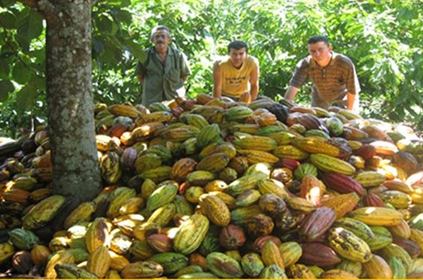
Figure 4: Round off harvest. Farm El Mandarino, El Venado village; Chigorodó (department of Antioquia). November, 2007.
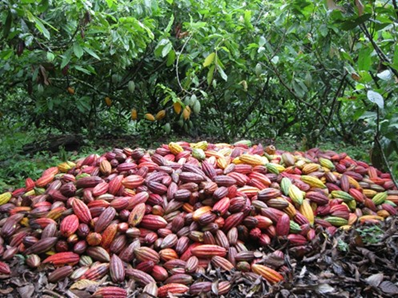
Figure 5: Round off harvest. Farm La Nacional, El Líbano village, municipality of Támesis (department of Antioquia). December, 2014.
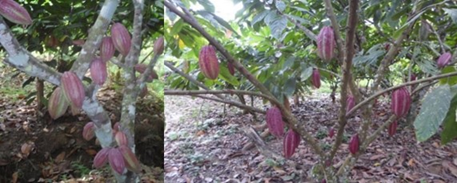
Figure 6: Sanitary state of pods hanging from trees. Farm Patio Bonito, Champitas village, Chigorodó (department of Antioquia). January, 2016.
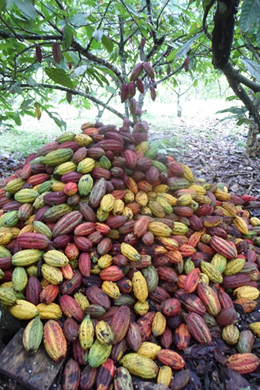
Figure 7: Round off harvest. Farm El Rinconcito, La Balsa village, municipality of Apartadó (department of Antioquia). November, 2017.
References
- Cubillos G and F Aranzazu. “Comparación de tres frecuencias de remoción de frutos enfermos en el control de Monilia roreri (Cif. & Par.)”. El Cacaotero Colombiano 8 (1979): 27-34.
- Cubillos G. “Exploraciones acerca de la importancia que tienen los frutos enfermos dejados en el suelo como fuentes primarias de infección de Moniliophthora roreri (Cif. & Par.)”. El Cacaotero Colombiano 18 (1981): 38-43.
- Evans HC. “Pod Rot of Cacao Caused By MONILIOPHTHORA (MONILIA) RORERI”. Commonwealth Mycological Institute Phytopathogical papers 24 (1981): 44.
- González LC. "Proyecto de Investigación. Epifitiología y combate de la Moniliasis del cacao. Informe anual 1981”. El Cacaotero Colombiano 23 (1983): 40-53.
- Maya S., et al. “Incidencia, severidad y pérdidas económicas de las principales enfermedades del cultivo de cacao en Antioquia”. ICA INFORMA 31.2 (2004): 33-38.
- Merchán VM. “Avances en la investigación de la Moniliasis del cacao en Colombia”. El Cacaotero Colombiano 16 (1981): 26-41.
- Rodríguez E. “Técnica de reducción de inóculo para controlar la moniliasis del cacao en Santander. Corpoica”. Innovación & Cambio Tecnológico 4.4 (2006): 68-78.
- Sáenz B. “Principales avances y resultados de la Campaña de Monilia en Colombia”. Corpoica. Innovación & Cambio Tecnológico 6. 6 (2007): 16-20.
Citation:
Luis E Ardila and Gabriel Cubillos. “Control Cases of Cacao Frosty Pod Rot (Moniliophthora Roreri) in Colombia: Outcomes”.
Innovative Techniques in Agriculture 2.5 (2018): 454-459.
Copyright: © 2018 Luis E Ardila and Gabriel Cubillos. This is an open-access article distributed under the terms of the Creative Commons Attribution License, which permits unrestricted use, distribution, and reproduction in any medium, provided the original author and source are credited.





























 Scientia Ricerca is licensed and content of this site is available under a Creative Commons Attribution 4.0 International License.
Scientia Ricerca is licensed and content of this site is available under a Creative Commons Attribution 4.0 International License.